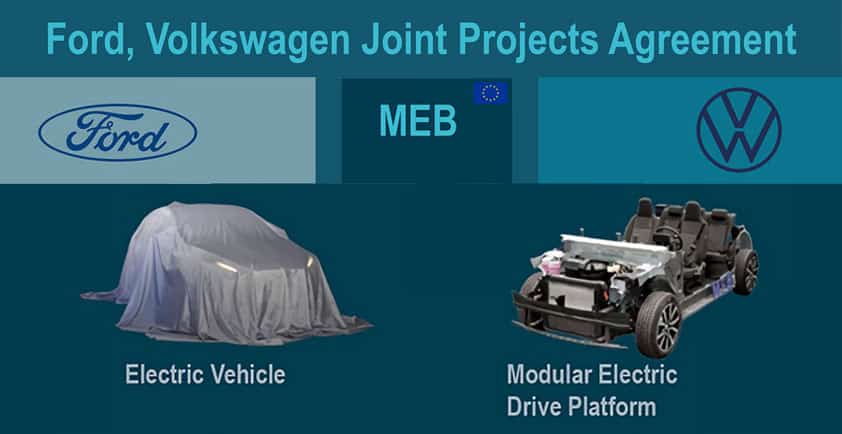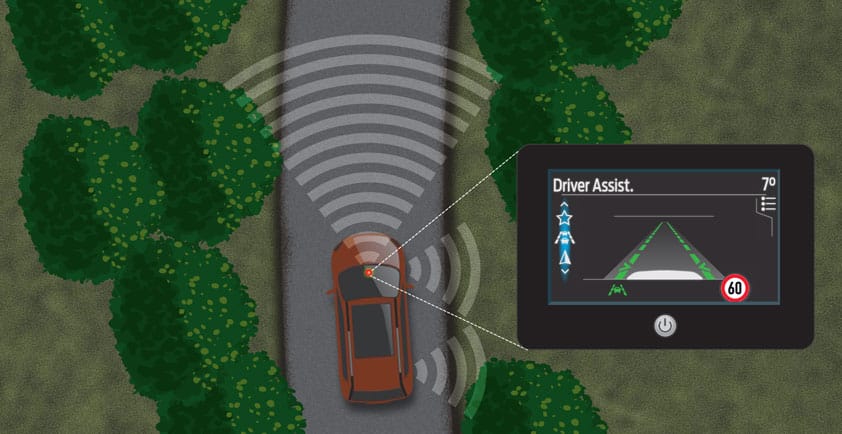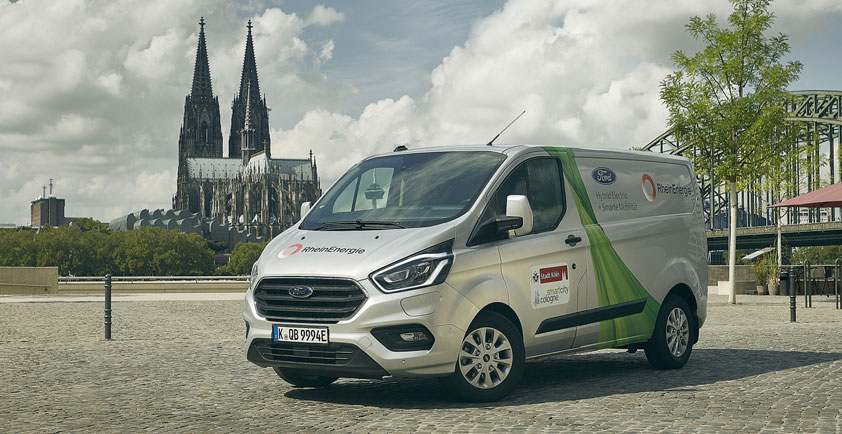

CONNECTED-CAR TECH COULD SHOW DRIVERS WHICH CAR PARKS HAVE SPACES AND WHERE TO FIND THEM
>> Ford and Vodafone pilot Parking Space Guidance, new connected-vehicle technology that advises drivers how many spaces are available in nearby car parks and how to get there
>> Drivers currently spend dozens of hours a year hunting for spaces, incurring significant costs, extending journey times and contributing to unnecessary congestion
>> Further collaboration on connected vehicle technology could enable drivers to see when traffic lights ahead will change, get more accurate road sign and weather information
In cities such as London and Frankfurt, in Germany, it is estimated that the average driver spends as many as 67 hours every year searching for parking spaces at a cost of more than €1,250. So-called “cruising” is responsible for an estimated 30 per cent of urban traffic.
But the problem might not be all down to a lack of parking spaces with data showing that in the UK some local authority car park occupancy rates can be as low as 50 per cent.
Ford and Vodafone are now testing new connected-vehicle technology that could make it easier to find parking spaces in city centres. Parking Space Guidance technology displays to drivers the number of spaces offered by nearby car parks and how to get to them.
“Satnavs are great at helping us to get to our destination but aren’t so useful when it comes to helping us to park there – especially in city centres,” said Tobias Wallerius, engineer, Product Development, Ford of Europe. “Parking Space Guidance is a connected‑vehicle technology that could help drivers to more quickly complete their journey, saving them money, time and benefitting overall air quality.”
“When vehicles can exchange data with infrastructure in real-time, traffic will become more intelligent, searching for a parking space will become less stressful and people will get to their destination more quickly,” said Michael Reinartz, Head of Innovation, Vodafone.
Parking Space Guidance, which is updated in real-time based on car park data, is being trialled by Ford and Vodafone as part of the KoMoD (Kooperative Mobilität im digitalen Testfeld Düsseldorf) programme, in Germany, a €15 million cross-industry project testing new connected‑vehicle and automated driving technologies.
As test vehicles drive through the city, they receive road status and car park information from a central computer system, based on their geolocation, along with information from nearby dynamic digital road signs.
Further features being demonstrated by Ford and Vodafone as part of KoMoD include:
> Traffic Light Assistance System, in which the time remaining on upcoming red or green traffic signals is displayed on the instrument panel. Advance warning of a red light can reduce hard braking, which could lead to safety, fuel economy and traffic flow benefits as drivers adjust their speeds accordingly.
> Tunnel Information System which provides advance information about lane closures, speed limits and slow-moving vehicles in tunnels up ahead.
> Vario Display delivers up-to-date information to the instrument cluster about major events that may impact local traffic, such as exhibitions, concerts or football matches.
> Traffic Control Systems on the motorway help to improve the overall traffic flow by adapting speed limits.
> Smart traffic sign transmission sends speed limit and hazard sign information directly to vehicle displays. While traffic sign recognition using cameras is present in many vehicles, it can be challenged in poor weather or surrounded by high-sided vehicles. Transmitting sign information to the vehicle using a cellular connection directly from the sign or a nearby road-side unit ensures drivers see important safety information.
> Bad weather warning automatically communicates weather conditions from one vehicle to others nearby; for example, if a vehicle's automated windscreen wipers detect rain, it will broadcast this to advise nearby drivers via their in-vehicle displays in case they may wish to adjust their speed or route.
Previously, the trials have demonstrated how technology can automatically warn other drivers of accidents on the road ahead, as well as show them the exact location of nearby emergency vehicles and how best to get out of the way of them.
For now, information broadcast between vehicles is intended to enable drivers to make informed decisions about their journeys. However, vehicle‑to‑vehicle and vehicle‑to‑infrastructure communications – such as those in the KoMoD trial – may play an important role in a future in which autonomous vehicles could respond automatically to them.
PROTOTYPE TECH QUICKLY WARNS DRIVERS OF ACCIDENTS AHEAD, COULD HELP CLEAR WAY FOR EMERGENCY VEHICLES TO SAVE LIVES
>> Ford and Vodafone are testing connected vehicle tech that can automatically warn other drivers of accidents ahead and shows how to get out of the way of emergency vehicles
>> Getting help to road accident victims more quickly significantly improves survival rates – and drivers who are confused in these situations cause critical delays
>> Prototype shows drivers how to create an “emergency corridor” – a legal requirement in some countries – so fire engines, ambulances and police vehicles can travel unhindered
DÜSSELDORF, Germany – The consequences of blocking the progress of emergency vehicles – and delaying their arrival at the scene of an accident – could prove fatal. In fact, experts believe that survival rates for road accident victims can be improved by as much as 40 per cent if they receive treatment just four minutes more quickly.
Together with Vodafone, Ford is now testing connected vehicle technology that could alert drivers to an accident ahead moments after it has happened. Furthermore, the system can provide early warning that emergency vehicles are approaching – and which side of the road they should move towards to avoid being an obstruction
The system is designed to create an “emergency corridor” along which fire engines, ambulances and police vehicles can reach their destinations more quickly; and is being trialled as part of KoMoD (Kooperative Mobilität im digitalen Testfeld Düsseldorf) – a €15 million project for the practical testing of new connected car technologies and automated driving.
“Connected and automated driving are key technologies of the future. Ford has a long history of developing and testing vehicle to traffic infrastructure and vehicle to vehicle communications that can contribute to greater road safety and efficiency across the world. Together with Vodafone and in cooperation with the other companies involved, we will gain decisive insights on the Düsseldorf testing grounds to further advance the networking of vehicles,” said Gunnar Herrmann, CEO, Ford of Germany.
Already, in the event of an accident, “eCall” functionality, which is available on the all-new Focus, can automatically call emergency services, and enables occupants to do so manually by pushing an SOS button inside the car.
Anticipating a future where all vehicles communicate with each other via mobile phone networks and embedded modems, Ford and Vodafone are now exploring how “eCall Plus” might also inform other drivers that there is an accident ahead, across a range of up to 500 metres. Attending emergency vehicles would also issue the warning, using in-car displays to show the correct “emergency corridor” formation.
On two-lane roads “emergency corridors” are created in between the two lanes by drivers pulling over to either side. If there are more than two lanes, then it depends whether the rule of the road is to drive on the left or the right. For those countries where motorists drive on the right, the corridor is created between the lane on the far left and the lane directly alongside.
But even in those countries where it is already a legal requirement for drivers to take this approach, many drivers still do not comply. In Germany, a survey revealed that almost half of all drivers don’t know how to form an “emergency corridor”.
The new technology complements Emergency Vehicle Warning technology that Ford is also testing at KoMoD. This sends a signal from the ambulance, fire engine or police car directly to nearby drivers, so that they will know the exact location of the vehicle and how far away it is. This can be especially useful in urban areas, for example at a crossroads where it might be difficult for drivers to immediately know where the siren is coming from.
“The digital revolution is bringing new forms of mobility which may help save lives on our roads,” said Hannes Ametsreiter, CEO, Vodafone Germany. “When cars communicate with each other, our rescue teams get a clear path forwards, so they can provide the right help at the right time, in situations when every second counts.”
Ford will also test further technologies at KoMoD that demonstrate the potential of connected vehicles. The Traffic Light Assistance System uses information on traffic light timings. A Tunnel Information System uses messages from roadside units to display to the driver warning messages about speed limits, slowly moving vehicles or lane closures.














